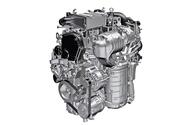Hydrotreated vegetable oil can be used as a straight substitute for conventional diesel
Stellantis says its diesel engine line-up has now been fully validated to use hydrotreated vegetable oil (HVO) ‘green diesel’.
It also says many of its earlier Euro 5 and Euro 6 diesels are already compatible, and certainly those marked with ‘XTL’ (denoting synthetic fuel made using a ‘something-to-liquids’ process). HVO gives the same performance as conventional diesel but is derived entirely from renewable sources.
HVO has been around for a few years and a number of other major manufacturers have compatibility with it. Introduced in Europe back in 2017, its initial take-up was by taxis and commercial vehicles.
Its cetane rating is higher, at over 70, than mineral diesel oil (51), indicating that it burns faster and cleaner.
Because it’s not a fossil fuel, using it reduces CO2 emissions by as much as 90% compared with conventional diesel and emissions are lower for NOx and particulate matter.
Synthetic petrol – like that from Porsche’s e-fuel project being run by HIF Global, in which Porsche has a £59 million stake – has been a headline grabber over the past couple of years but shouldn’t be confused with biofuels like HVO, biodiesel or bioethanol.
Synthetic fuels are literally that, synthetic, but a hydrocarbon fuel is just like the real thing. They can be used as a direct, drop-in substitute without modifications being made to the car, assuming the octane rating is compatible with the conventional pump fuel it’s replacing.
The difference between synthetic fuels and their conventional counterparts is that, like biofuels, they are not fossil-based.
Although CO2 is one of the ingredients used to make them, it’s either being produced specifically for the job or by the most elegant solution: extracting it directly from the atmosphere using the DAC process (direct air capture).
From there, it’s combined with sustainable hydrogen to make methanol, which is then synthesised into a hydrocarbon fuel, the chemistry of which is very similar to the petrol we know.
At the HIF plant in Chile, the hydrogen is produced by electrolysis of water using wind turbine-generated electricity.
Biofuels are derived from organic materials and take different forms such as bioethanol, an alcohol fuel made from plant-based biomass and blended with pump petrol to reduce the amount of fossil fuel burned by the car, and biodiesel, which is derived from oils and fats.
Brazil has long been the largest producer of bioethanol and the EU is the largest producer of biodiesel.
Although made from similar raw materials such as waste vegetable oil, HVO isn’t the same thing as biodiesel and it is made using a completely different process.
While biodiesel is made using the FAME process (fatty acid methyl esters), HVO is produced using the hydrotreatment process it takes its name from.
It can be blended with biodiesel but can also be used straight as a drop-in substitute for diesel.

